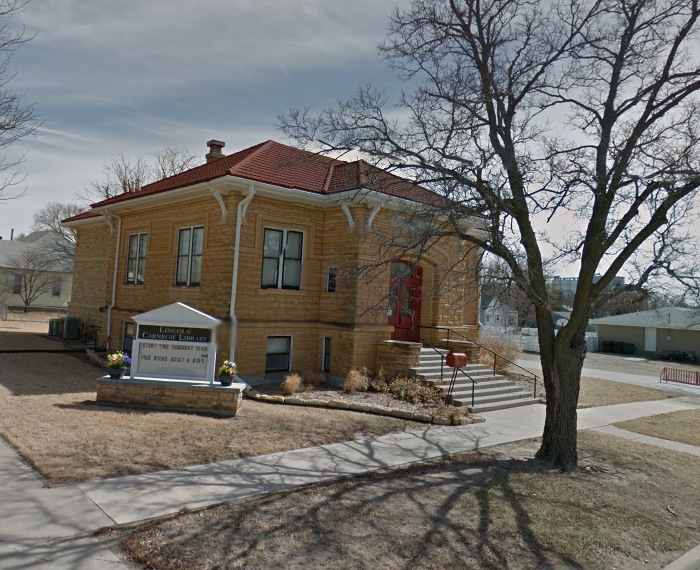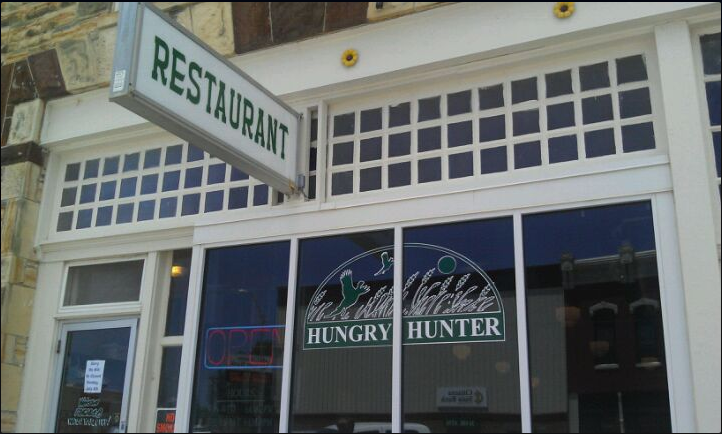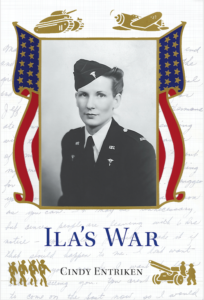One ounce bottle of Tincture of Jamaica Ginger, made for Rexall. This bottle is similar to the one that Ira and four of his friends purchased from the Rexall Drug Store in Lincoln, Kansas, in 1930.
1930 was a memorable year for many reasons
- Over 1,300 banks failed resulting in the start of the Great Depression which enveloped the world.
- Haile Selassie became the Emperor of Ethiopia.
- Britain’s largest airship crashed in France killing everyone on board.
- The cartoon character, Betty Boop, made her first appearance.1
- And a nationwide health scandal erupted when over 50,000 American men and women were poisoned after drinking adulterated Jamaica Ginger. . .
including five men from Lincoln, Kansas — my great grandfather, Ira Armsbury, and four other men. Ira’s poisoning became one of the defining moments in the life of his third oldest daughter, Ila Armsbury. I believe it was one of the key factors that lead her decision to become a nurse.
I’d been working on the book, Ila’s War, for a couple of years when I realized that I wanted to know who, besides Ira, had been poisoned.
Differing Versions of the Story
The first time I asked was as a teenager about 14. “Grammy,” I asked as I stood over the floor heater between the kitchen and dining room of her Lincoln, Kansas, home, “How did Ira (I called him Grandpa Armsbury) get crippled?”
“Oh, Honey,” she replied with a sincere and straight face, “He was crippled in a garage fire.”
And that’s what I believed until years later when I visited my aunt Eloise, Ila’s youngest sister. According to her Ira drank Jamaica Ginger, what the family called boot-leg booze, and that was how he was crippled.
But in a letter to me dated February 4, 2000, Ila wrote, “When Daddy drank the Jamaica Ginger and got crippled — 6 men in Lincoln were down with it, but only Daddy lived! He was in bed a year — went all over Kansas trying to find a doctor who could cure him — But no luck!”
If there was anyone who would know, I figured it would be Auntie Metta, Ila’s older sister.
So in June of 2009 I drove out to Grand Junction, Colorado, where Metta lived at a retirement village, The Commons, to talk about when Ira got crippled.
“I know when it happened, and I know how. It was in . . . ’30 because I had started college in that fall of 1929 and Mother wouldn’t let me come home for Easter in 1930 because they didn’t know what was wrong with Daddy and she was afraid that it might be contagious.”
“Auntie Metta, I’ve always heard that a group of guys got poisoned at the same time as Grandpa and that some of them died or someone went blind, or something. Do you know who they were and what happened to them?”
“Yes. . .no one died, that’s not true, and no one went blind. There was a party at Earl Zink’s2 house and Daddy went. The other men were Mr. Olson. He walked with a cane afterwards. There was Mr. White, he walked with a cane also. Herman Zier wasn’t as severely affected, and Earl Zink. When Daddy got sick, Grandpa — that’s my grandfather and your great great grandfather — Newt, came down from Lucas and stayed at the house and took care of Daddy. . .bathed him, took him to the bathroom, just took care of him, while Mother and Ila worked at the restaurant.”
“Nothing happened to Mr. Zink, right?”
“No, nothing. And I never did know where they got it.”
But I knew. Earlier in the year, while in Lincoln, I’d asked Ernie Liggett, a life-long resident and someone who might know the source of the Ginger. “Yeah, I know where they bought it . . . out of the back door of Frevele’s Rexall. Mixed it with coca cola.”
When I told Metta she replied, “Well, I didn’t know that. I just thought it was bad bathtub gin.”
Getting another confirmation
Have you read All the President’s Men, the book written by Carl Bernstein and Bob Woodward after they had exposed Watergate? They decided early on that they needed two corroborating sources before they’d publish something. I decided that, given the inflammatory nature of some of the material in Ila’s War that I would use the same standard – two corroborating sources. Metta was one. So I went back to Lincoln in mid-July 2009 to look for another. I expected the Lincoln Carnegie Library to be my second source since they had microfiche files for Lincoln papers going back to the 1880s.

The Lincoln Carnegie Library and new addition
I was quite surprised by my emotional reaction as I read the old newspapers trying to figure out exactly when Ira got sick. I noticed I was having difficulty sitting still in my chair and felt dread and anxiety. I knew what was coming and that life-as-usual would never be the same after Ira was poisoned. Ira would become crippled, Florence would work herself into an early grave at the age of 66. Ira’s drinking and running around guaranteed that my great aunts and my grandmother would all have to help financially because their parents, Ira and Florence had no money.
After two long days of reading through hours of microfiche, all I could show for my efforts were a headache, a neck ache and burning, watery eyes. And I was no closer to knowing who else had been poisoned.
So, I decided to take a break and get some lunch.
Because Lincoln is a small town, it offers few choices for restaurants. I drove to the Hungry Hunter II3, a restaurant owned by one of my childhood friends, Bob Berthelson. Lincoln’s Hungry Hunter was designated II because I was in Branson, Missouri, where Bob opened the first one.

The Hungry Hunter, Lincoln, Kansas, June 23, 2011. Photo by Mary G.
The decor of Lincoln’s Hungry Hunter was a combination of mounted, stuffed, dead animals interspersed with antique kitchen utensils. The ceiling was very high, at least 15 feet, and there was a wooden, display shelf that ran around the entire room about 2 feet below where the walls and ceiling met. All the decorative items were displayed on the shelves.
The front door of the restaurant was set into a floor-to-ceiling wall of windows which faced north. Thankfully a vestibule protected patrons from the blasts of cold, winter, Kansas winds. Tables and booths lined the west wall, with two booths next to the northern, front glass wall so that sidewalk shoppers could watch as people ordered their food, ate their meals, and carried on conversations about the day’s happenings. The east wall had a large set of French doors which opened into another dining room – typically only used on Sundays – and a counter with 10 swivel stools. The kitchen was at the back. Two long, rectangular tables, and two large round tables sat in the middle of the large dining area. Lincoln is a small town where everybody knows everybody, so the big tables usually wound up being community tables where people came in, spotted a friend or two, and plopped down for a glass of tea or a cup of coffee, and a piece of pie.
I was tired and discouraged so I decided to eat my burger and fries and then drive back to Wichita.
But just as I was getting up to pay my bill, I noticed the large, round table at the back, the one closest to the kitchen. Six men were sitting there, one had just been served a large platter of hash browns, eggs, bacon, biscuits and gravy, and the others were drinking coffee and talking.
I didn’t know anyone at the table, and I’m pretty sure they were all older than I – I was 58 when this happened. I could tell a couple were substantially older than I. After paying my bill I decided to introduce myself, tell these men what I was doing, and see if anyone at the table had ever heard about my great grandfather and the Jamaica Ginger.
“Excuse me” – long pause as everyone stopped talking and looked at me – “my name is Cindy Entriken. I live in Wichita but I grew up here, and I’m back doing some research about family history. I wonder if any of you might have known my great grandfather, Ira Armsbury?”
An elderly gentleman holding a cane and sitting to my right looked up at me and said, “Ooh, sure. Ira Armsbury, I knew ‘im.” A couple of other men also nodded their heads in agreement.
“You know Grandpa was crippled, and I’m doing research to find out more about what happened. The story in my family was that Grandpa and a group of guys drank poisoned Jamaica Ginger at a party at Porky Zink’s house. Do you know about that?”
“Ooh, sure! Group ‘o guys. . . .a group ‘o guys. Yeeaahh, I remember hearing about that,” again from the elderly gentleman on my right. Other heads nodded in agreement.
“Do you happen to know who else, besides my great grandfather was at that party?”
Conversation exploded as the men began throwing out names to each other and saying things like “was it old . . .” “Nah, it was . . . ” Finally they came to a consensus and began naming names: my great grandfather, Ira, S. C. Page, Fred Noon, Mr. Olson, Fred White, Herman Zier, and Earl (Porky) Zink, owner of a bakery and grocery store in Lincoln.
I was thrilled and exclaimed, “WOW! This is great! My Auntie Metta knew all the names but two. . .Mr. Page and Mr. Noon. So, what happened to all these guys?” The conversation resumed and grew louder as they jogged each other’s memories.
“Now let’s see. S. C. Page – you know him – he owned Page Motor Company – he walked with canes.”
“Yep, yep that’s right.”
“And, ‘member, old Herman Zier, he kept walking around and around. Said if he didn’t stop walking, he wouldn’t get crippled.”
“Yep, yep, I ‘member that, too . And he wasn’t as bad as the rest.”
“No, no, he wasn’t.”
“Musta worked.”
After consulting each other, the group agreed that of the 7 men at the party, the 5 who developed Jake Leg were Ira, S. C. Page, Fred Noon, Mr. Olson, and Fred White.
They concluded that Ira was the worst of the group4 – he walked with crutches most of the time. Mr. Olson, Mr. Page, and Mr. White used canes but there was no consensus about what Mr. Noon used to assist him in walking. And they were all certain that none of the men died nor had anyone gone blind.
So finally, after years of hearing differing versions of the story, spending hours staring at microfiche until I was almost blind, talking to different family members including my grandmother, who had lied to me, I knew who got poisoned besides Ira.
The End!
1http://www.thepeoplehistory.com/1930.html (accessed 10/31/2020)
2Earl (Porky) Zink was the owner of Zink’s Grocery and one of the business men targeted by the Ku Klux Klan in the 1920s because Mr. Zink attended the Catholic Church. The Klan threw a Lincoln, Kansas, teenager through the front plate glass window of Ira’s Lunch when Ira refused to switch his bread supplier from Mr. Zink to Herman Knock, a local baker who was also a Klan member. You can learn more about Ira’s fight with the Klan and read an excerpt from my book, Ila’s War, at https://cindyentriken.com/books/
3As of this writing the Hungry Hunter II is closed and a new, leaner version is open about a block west on a side street. Everyone, including me, loves the Hungry Hunter for the ambiance — bright, cheery, friendly. Bob is the cook and you can usually see him back in the kitchen. He has a perpetual twinkle in his eyes, a warm voice, and a great laugh. For simple and filling food, loaded with carbohydrates and fats, you can’t beat the Hungry Hunter. Now, let me be clear, that is not an insult to Bob or his restaurant. If you order a cheese burger and fries, which I did, or even a small garden salad with bleu cheese dressing, then you’re getting carbohydrates and fats. But they taste great! And if you want a hearty and delicious home-cooked meal, you can’t beat Bob’s fried chicken.
4Ira was the first one to be crippled and also the most severely affected, probably because he drank the most Ginger.
Coming Up . . .
the countdown to the release of Ila’s War on Wenesday, November 11, Veterans’ Day. You can purchase your copy from here or ask your local bookstore to order a copy for you.
So



Love this story as it’s so fun to hear all the other Lincoln Men’s stories too! And I can’t wait to get your book. It will be so good to read about our relatives! What a treasure you have made!
I hope you are putting one in the little museum, which I haven’t been to yet, but am going to this summer!!!!! Covid or not! I need outta here!!🤪
Hi, Wendy. I’m so glad you enjoyed this. I was a little concerned that some readers might find it boring because it’s about men they didn’t know. And of course I really didn’t know any of them except for Grandpa (Ira) although I do remember seeing Mr. Page around town. I have several items from Ira’s Lunch that I will be donating to the museum and I’m donating a copy of the book to the Lincoln library. I’m still hoping my first book reading and signing will be in Lincoln but want to wait until it’s safer to do that. Let me know when you’re headed this way so we can have a mini-family reunion.
So looking forward to picking this up! Thank Lisa Wise for pointing me to it! Sounds like a great read and really appreciate you putting it in historical context.
Hi, Tamara. Thanks for the email. I’m thrilled that you’re interested in reading my book. You can order it from my website on or after November 11, 2020. The paperback is $19.99 plus tax, and the hardback with dust cover is $25.00 plus tax. I’ll also include a bookmark which was specifically designed to go with the book. I appreciate your comment about putting the story into historical context. The most enjoyable part of working on the book was doing the research including interviews with family members or others who knew Ila. After you’ve read the book I’d love to hear back from you with your feedback. Thanks again for contacting me. Take care.